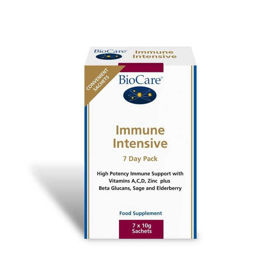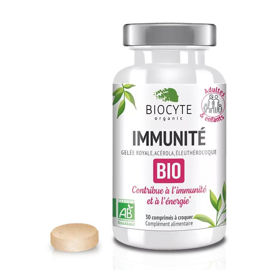Customer question:
How long does purulent angina last? Anonymous customer's question
Pharmacist's answer:
Suppurative angina, a bacterial infection of the tonsils, usually lasts 3 to 7 days. Still, the duration of the illness can vary depending on several factors, including the condition of the infection itself, the individual's immune system, treatment, and other concurrent medical conditions. After exposure to the bacteria that cause angina, it can take 1 to 5 days for the first symptoms to appear.
Symptoms of purulent tonsillitis, such as sore throat, difficulty swallowing, fever, muscle pain, loss of appetite, and sometimes swollen and pus-filled tonsils, can appear suddenly and gradually worsen. Symptoms usually improve within 3 to 7 days, especially if treatment is started early and is effective.
After the acute symptoms have resolved, it may take several additional days or weeks for the patient to fully recover, including regaining energy and resolution of any residual symptoms such as fatigue. It is essential to consult a doctor when treating purulent angina, especially if the symptoms last long or worsen.
Can purulent angina be dangerous in a child?
Purulent angina in children can be a serious condition, especially if it is not treated correctly. Although most cases of purulent angina in children are not life-threatening, there are certain situations where complications can become severe and require medical intervention.
Some possible complications of purulent angina in children include:
- Tonsil abscess: Bactological infection of the tonsils can sometimes lead to an abscess, a pus formation in the tissue around the tonsils. This can cause severe pain, neck swelling, difficulty swallowing, and difficulty breathing.
- Rheumatic fever is a rare but serious complication of purulent angina that can affect the heart, joints, skin, and central nervous system. It can occur several weeks after infection with Streptococcus pyogenes bacteria.
- Glomerulonephritis is an inflammatory kidney disease that can occur as a complication of purulent angina, usually a few weeks after infection with Streptococcus pyogenes bacteria. Glomerulonephritis can cause swelling, hypertension, and urinary disturbances.
- Other bacterial infections: Purulent angina can sometimes cause other bacterial infections, such as ear infections, sinusitis, or pneumonia.
If you notice that your child has symptoms of purulent angina, consult a doctor. Timely treatment can help prevent complications and ease the child's symptoms. It is also essential to monitor the child and, if necessary, seek medical help if the symptoms worsen or if new ones appear.
Do we need to see a doctor urgently because of purulent angina?
Usually, you do not need to see a doctor right away for purulent angina, but it is recommended that you do so, especially if you experience severe symptoms or if symptoms worsen. If you have a very high body temperature, intense pain in the throat, difficulty swallowing or breathing, swollen lymph nodes in the neck, or other symptoms, it is recommended that you consult a doctor as soon as possible.
If the symptoms of purulent angina last more than a few days or recur several times in a short period, it is also reasonable to seek medical help to check the cause and consider further treatment. If you have any other health problems or if you are taking any medication, it is a good idea to consult your doctor to rule out possible complications or drug interactions.
Although purulent angina is usually not a life-threatening condition, it can cause severe complications in some cases, so it is always better to be cautious and consult your doctor if you have any doubts or concerns.
Which antibiotics treat purulent angina?
Suppurative angina is usually a bacterial infection of the tonsils, so it is usually treated with antibiotics that work against bacteria. Some commonly prescribed antibiotics to treat purulent angina include:
- penicillin,
- amoxicillin,
- cephalosporin,
- macrolide and
- tetracycline.
How do we distinguish between purulent and viral angina?
Differentiating between purulent and viral angina can be challenging, as they can have similar symptoms, and both types of angina affect the tonsils similarly. However, some signs and symptoms can help distinguish between these two forms of angina. A characteristic sign of purulent tonsillitis is whitish or yellowish purulent deposits on the tonsils. Tonsillitis can cause swollen and painful lymph nodes in the neck. The sore throat in purulent angina is usually severe and may make swallowing difficult. Purulent angina often also causes an elevated body temperature.
There are usually no pus deposits on the tonsils in viral angina. Viral angina is often associated with cold symptoms such as a runny nose, cough, sneezing, and general malaise. A sore throat in viral angina can be less severe than in purulent angina. Viral angina usually causes a lower body temperature than purulent angina, but sometimes, it does not cause it.
Can purulent angina recur?
Yes, purulent angina can recur. Although most cases of purulent angina are acute and resolve with appropriate antibiotic treatment, the infection can sometimes recur or develop into a chronic condition. If the infection has not been wholly eradicated with antibiotics or the treatment has not been adequate, the bacteria can multiply again and cause a new episode of purulent angina.
If a child or adult is exposed to the same bacteria that causes purulent angina, for example, through contact with an infected person, the infection can recur. An individual with a weakened immune system is also more prone to recurrent infections, including purulent angina. Also, some chronic inflammatory conditions, such as chronic tonsillitis, can cause repeated episodes of purulent tonsillitis.
Can purulent angina be cured without antibiotics?
In some cases, purulent angina can be cured without antibiotics, but this depends on several factors, including the cause of the infection, the severity of the symptoms, the individual's age and general health, and the response to treatment. However, for purulent angina caused by bacteria, starting the treatment with antibiotics is recommended to prevent possible complications and speed up recovery.
Sometimes, an individual with a weak immune system or mild symptoms of purulent angina caused by a bacterial infection may receive symptomatic treatment, such as gargling with sea salt or using anti-inflammatory medications to relieve pain and inflammation. However, it is essential to consult with your doctor before deciding on a non-antibiotic treatment.
For severe symptoms of purulent angina, such as high fever, severe sore throat, swollen lymph nodes, and the presence of purulent deposits on the tonsils, it is recommended that treatment with antibiotics be started to prevent complications and speed up recovery. Therefore, it is best to consult a doctor who will assess your symptoms and advise you on the appropriate treatment for your specific needs.
Can purulent angina cause tonsil stones?
Yes, purulent angina can contribute to the formation of tonsil stones, especially when there is a recurrent or chronic infection of the tonsils. Tonsil stones, also called tonsilloliths, are small, hard, lumpy particles that can form in the recesses of the tonsils, called crypts. These stones comprise food debris, bacteria, mucus, and dead cells that accumulate in the tonsil crypts.
In purulent angina, purulent deposits often appear on the tonsils, which contain bacteria, mucus, and dead cells. These deposits can affect the formation of tonsil stones. Inflammation of the tonsils can increase the amount of mucus and dead cells that accumulate in the tonsil crypts, contributing to the formation of tonsil stones. Repeated episodes of purulent angina can cause chronic inflammation of the tonsils, contributing to an increase in the formation of tonsil stones.
How to treat swollen tonsils as a result of angina at home?
It is essential to rest and limit physical activity to give your body enough time to recover. Make sure you stay well hydrated, as drinking sufficient amounts of water can help thin mucus, relieve sore throats, and promote the elimination of toxins from the body. Warm drinks such as teas, soups, or warm water with honey and lemon can also help relieve pain and inflammation.
Rinsing your mouth with warm salt water can help reduce inflammation and relieve sore throat. A little baking soda can also be added for additional softening. Applying cold compresses to the outside of the neck can also help reduce swelling and discomfort. You can use a cold compress or an ice pack wrapped in a soft cloth or towel.
If you have severe pain, you can take painkillers such as paracetamol or ibuprofen according to the instructions on the package. Humid air can also help soothe a dry and irritated throat. Using a humidifier or humidifying the air with using steam can help relieve discomfort. If symptoms do not improve within a few days or worsen, consult a doctor.
Interesting reading: Viral angina













